
Charles de Lorraine, duc de Mayenne was a French noble, governor, military commander and rebel during the latter French Wars of Religion. Born in 1554, the second son of François de Lorraine, duke of Guise and Anne d'Este, Mayenne inherited his fathers' position of Grand Chambellan in 1563 upon his death. He fought at the siege of Poitiers for the crown in 1569, and crusaded against the Ottomans in 1572. He served under the command of the king's brother Anjou during the siege of La Rochelle in the fourth war of religion, during which he was wounded. While the siege progressed, his uncle was killed by a cannonball, and he inherited his position as governor of Bourgogne. That same year, his marquisate of Mayenne was elevated to a duché pairie. He travelled with Anjou when he was elected as king of the Commonwealth and was a member of his court there until early 1574 when he departed on crusade again. Returning to France, he served in the fifth war of religion for Anjou, now king Henri III of France, but his badly underfunded army was unable to seriously impede the Protestant mercenary force under Casimir. He aligned himself with the Catholic Ligue that rose up in opposition to the generous Peace of Monsieur and fought in the sixth war of religion that resulted, serving at the sieges of La Charité-sur-Loire and Issoire. During 1576, he married Henriette de Savoie-Villars, securing a sizable inheritance in the south west, and the title of Admiral on the death of her father in 1578. Mayenne was granted full command of a royal army during the seventh war of religion in 1580, besieging the Protestant stronghold of La Mure successfully, and clearing several holdout towns after the peace. In 1582 he was obliged to surrender his title of Admiral to Joyeuse, a favourite of Henri. The following year he was involved in an abortive plan to invade England, though it came to nothing due to lack of funds.
The War of the Three Henrys, also known as the Eighth War of Religion, took place during 1585–1589, and was the eighth conflict in the series of civil wars in France known as the French Wars of Religion. It was a three-way war fought between:
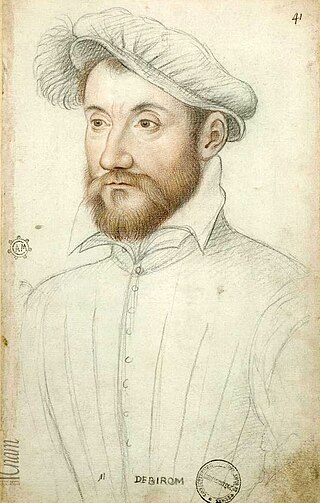
Armand de Gontaut, Baron of Biron was a soldier, diplomat and Marshal of France. Beginning his service during the Italian Wars, Biron served in Italy under Marshal Brissac and Guise in 1557 before rising to command his own cavalry regiment. Returning to France with the Peace of Cateau-Cambresis he took up his duties in Guyenne, where he observed the deteriorating religious situation that was soon to devolve into the French Wars of Religion. He fought at the Battle of Dreux in the first civil war. In the peace that followed he attempted to enforce the terms on the rebellious governorship of Provence.
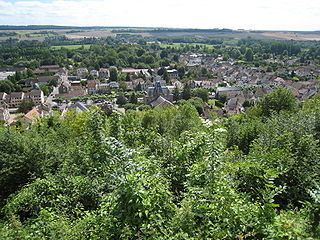
Ivry-la-Bataille is a commune in the Eure Department in the Normandy region in northern France. Ivry-la-Bataille was formerly known as Ivry.
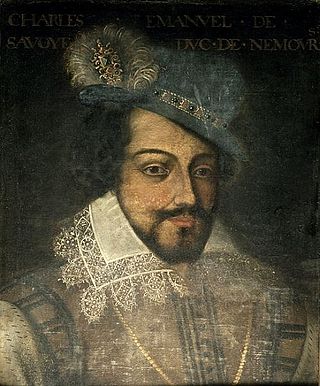
Charles-Emmanuel de Savoie, prince de Genevois and duc de Nemours was a French prince étranger, governor, military commander and rebel during the latter French Wars of Religion. The eldest son of Jacques de Savoie and Anne d'Este, Nemours was a member of a prominent princely family. He entered French political at the age of 18 as a partisan of the second Catholic ligue, rallying cavalry to the rebel army, and assisting in forcing Henri III to capitulate to their demands. In the following years, the king was compelled by the terms of the peace to make war against Protestantism. The former rebel ligueurs hoped the 'cowed' king would afford them advantage, but Henri was keen to dilute the authority of the former rebels. As a result Nemours' position as colonel-general of the light cavalry was diluted with several appointments of royal favourites. During this period, Nemours coveted the governate of the Lyonnais, which had previously been held by his father before 1571. When François de Mandelot, who held the office, died in November 1588, Henri was compelled to recognise Nemours as the new governor due to his political weakness. Frustrated at his continued capitulations to the ligue, on 23 December 1588, Henri assassinated the leader of the ligue the duke of Guise. In the wake of the assassination, Nemours and other ligueur leaders were arrested by the king. Nemours was however quickly able to bribe his guards and secure freedom.

The Battle of Gravelines was fought on 13 July 1558 at Gravelines, near Calais, France. It occurred during the twelve-year war between France and Spain (1547–1559).

Charles de Gontaut, 1st Duke of Biron was a French noble, military commander, Admiral, Marshal and governor during the final days of the French Wars of Religion. The son of Marshal Armand de Gontaut, baron de Biron who had served the crown militarily throughout the religious wars, Biron made his entry into French politics in the late 1580s. Initially a follower of the chief royal favourite Épernon by 1589 he was a candidate to become Admiral of France. In August 1589 Henri III was assassinated, and Biron and his father transferred their loyalties to the Protestant Henri IV putting them at war with the Catholic ligue. He fought at the royalist victories of Arques and Ivry in late 1589 and early 1590, during which he developed a reputation as an exceptional commander. In 1592 he became Admiral of France, a post he would hold for two years, before being compelled to trade it for the title of Marshal so that it could be offered to a rebel. In 1593 Biron invaded Bourgogne, and succeeded in capturing many villages, but was unable to secure any major cities. In 1595 he would again invade Bourgogne with considerably more success, Beaune, Auxonne, Autun and finally Dijon falling to him in late May of that year. During the campaign, Henri would grant him the governate of Bourgogne. A Spanish army under the Constable of Castilla invaded in response and joined forces with the duke of Mayenne lieutenant-general of the ligue. Having called on Henri for support, Biron and his king would best the Constable and duke against the odds at Fontaine-Française.
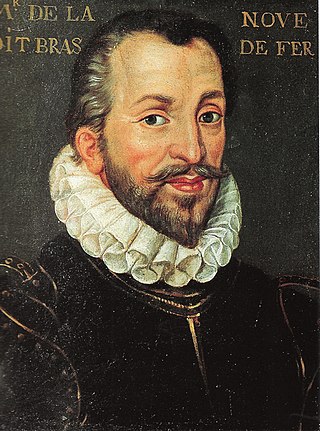
François de la Noue, called Bras-de-Fer, was one of the Huguenot captains of the 16th century. He was born near Nantes in 1531, of an ancient Breton family.
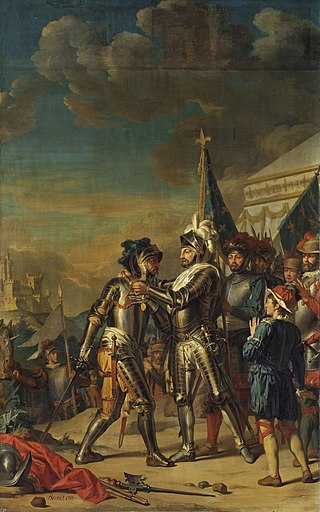
The Battle of Renty was fought on 13 August 1554, between France and the Holy Roman Empire at Renty, in the northern theatre of the Italian Wars. French commander Francis, Duke of Guise, had already forced the emperor to abandon the Siege of Metz in 1552. King Henry II of France had occupied the city according to the terms of the Treaty of Chambord he had signed with several Protestant Imperial princes.
The Battle of La Roche-l'Abeille occurred on 25 June 1569 between the Catholic forces of King Charles IX of France commanded by the Duke d’Anjou and the Huguenots commanded by the Admiral de Coligny during the "Third War" (1568–1570) of the French Wars of Religion.

The Battle of Arques occurred on 15–29 September 1589 between the French royal forces of King Henry IV of France and troops of the Catholic League commanded by Charles of Lorraine, Duke of Mayenne, during the eighth and final war (1585-1598) of the French Wars of Religion. It was a victory for Henry IV.

The siege of La Rochelle of 1572–1573 was a massive military assault on the Huguenot city of La Rochelle by Catholic troops during the fourth phase of the French Wars of Religion, following the August 1572 St. Bartholomew's Day massacre. The conflict began in November 1572 when inhabitants of the city refused to receive Armand de Gontaut, baron de Biron, as royal governor. Beginning on 11 February 1573, the siege was led by the Duke of Anjou. Political considerations following the duke's election to the throne of Poland in May 1573 resulted in negotiations, culminating on 24 June 1573, that lifted the siege on 6 July 1573. The Edict of Boulogne signed shortly thereafter brought an end to this phase of the civil war.
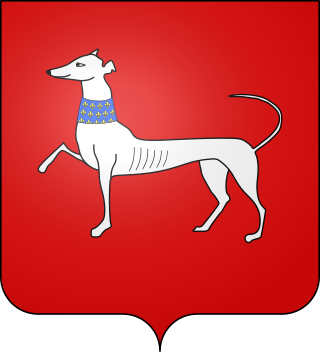
Guillaume Fouquet de la Varenne was a French chef who became an important statesman in the service of Henry IV.
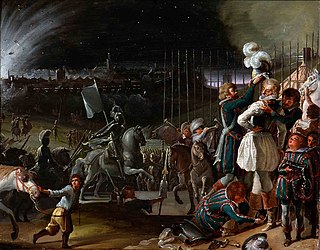
The siege of Paris took place during the French Wars of Religion when the French Royal Army under Henry of Navarre, and supported by the Huguenots, failed to capture the city of Paris from the Catholic League. Paris was finally relieved from the siege by an international Catholic and Spanish army under the command of Alexander Farnese, Duke of Parma.

The Battle of Craon took place between 21–24 May 1592, between the French Royal army under the Duke of Montpensier and François de Bourbon, Prince of Conti, reinforced by English contingents under Sir John Norreys, against the combined forces of Spain, during their occupation of Brittany, and the Catholic League of France during the War of the Three Henrys and the Anglo-Spanish War (1585–1604), in the context of the French Wars of Religion. Craon was besieged by the army of Henry of Navarre, but the defenders, supported by a Catholic relief force recruited by Philippe Emmanuel, Duke of Mercœur, resisted. At the end, Craon was relieved by the Spaniards under Don Juan del Águila, who defeated the Anglo-French besiegers.

The siege of Amiens was a siege and battle fought during the Franco-Spanish War (1595–1598), as part of both the French Wars of Religion and the Anglo-Spanish War (1585–1604), between 13 May and 25 September 1597. The Spanish, who had sent a large army in March, had captured the city of Amiens easily in a ruse. Henry IV of France, after the surprise of the capture, immediately and quickly built up an army which included a large English force and besieged Amiens on 13 May.

The siege of Eindhoven, also known as the capture of Eindhoven of 1583, took place between 7 February and 23 April 1583 at Eindhoven, Duchy of Brabant, Spanish Netherlands during the Eighty Years' War and the Anglo-Spanish War (1585–1604). On 7 February 1583 a Spanish force sent by Don Alexander Farnese, Governor-General of the Spanish Netherlands, commanded by Karl von Mansfeld and Claude de Berlaymont, laid siege to Eindhoven, an important and strategic city of Brabant held by Dutch, Scottish, and French soldiers under the States' commander Hendrik van Bonnivet. After three months of siege, and the failed attempts by the States-General to assist Bonnivet's forces, the defenders surrendered to the Spaniards on 23 April.

The siege of Caudebec was a military event that took place between 24 April to 21 May 1592 as part of the French Wars of Religion and the Anglo-Spanish War (1585–1604). The Spanish and the French Catholic League forces of Duke of Parma had captured the town of Caudebec on the Seine, where they soon found themselves trapped by the reinforced Royalist Protestant army led by Henry of Navarre consisting of French, English, and Dutch troops. Seeing that Henry's force had now surrounded him, Parma seeing that defeat was inevitable, pulled his 15,000 men across the river in a single night to escape and retreat to the south.
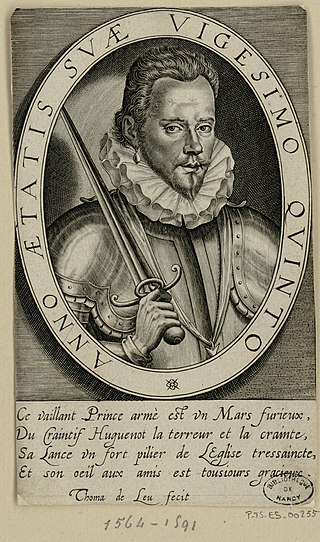
Claude de Lorraine, chevalier d'Aumale was a French churchman, noble and military commander during the French Wars of Religion. The second son of Claude, Duke of Aumale and Louise de Brézé, Aumale was destined for a life in the church. His uncles Cardinal Lorraine and Cardinal Guise ensured that he was granted many abbeys, that brought him a sizable income. At the age of 19 in 1583, he travelled to Malta to perform his service as a Knight of the Order of Saint John, finding success in his campaign.
Louis de L'Hôpital, marquis de Vitry was a French noble, governor, military commander and rebel during the latter French Wars of Religion. The son of François de l'Hôpital and Anne de La Châtre, Vitry found himself drawn into the opposition to the king in the early 1580s affiliating with the king's brother Alençon. In this capacity he served under the command of his maternal uncle Claude de La Châtre In 1584 the king successfully detached him, and made Vitry into a royal favourite, granting him the honour of being made a chevalier de l'Ordre de Saint-Michel, before appointing him the governor of Dourdan and lieutenant of the royal hunt.


















